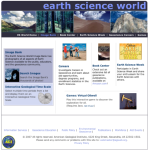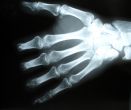   
This lesson introduces students to the basics of nuclear energy production. Topics include radioisotope thermoelectric generators, natural decay of radioactive...

This lesson reinforces the idea that Earth's population, including the population of the United States, is growing at a dramatic rate. It discusses some of the...

This lesson introduces students to Sir Isaac Newton's Second Law of Motion. Topics include the two ways to study the dynamics of a system in which there is...

This lesson provides an overview of the various types of interactions between tectonic plates. The discussion uses the analogy of a cracked egg to describe the...

This lesson provides an introduction to the problems associated with ground-level ozone ('smog'). It reinforces the idea that ozone at ground level is harmful...
|

AMSER is a portal of educational resources and services built specifically for use by those in Community and Technical Colleges but free for anyone to use.
AMSER is funded by the National Science Foundation as part of the National Science Digital Library, and is being created by a team of project partners led by Internet Scout. 
Bruises start out looking red because of hemoglobin, the pigment in red blood cells. As blood pools under the skin, light striking the hemoglobin bounces back and bends through many skin layers, making the bruise look blue, black, or purple.
|
  
Manage your resources
Save, organize, and share resources that you find. Subscribe to bulletins Automatically be notified about new resources that match your interests. It's easy, fast, and FREE! 
AMSER =
FREE ONLINE RESOURCES for the CLASSROOM  |
Copyright 2024 Internet Scout
Resource Metadata
Copyright 2024 Internet Scout
Copyright 2024 Internet Scout
http://amser.org/












